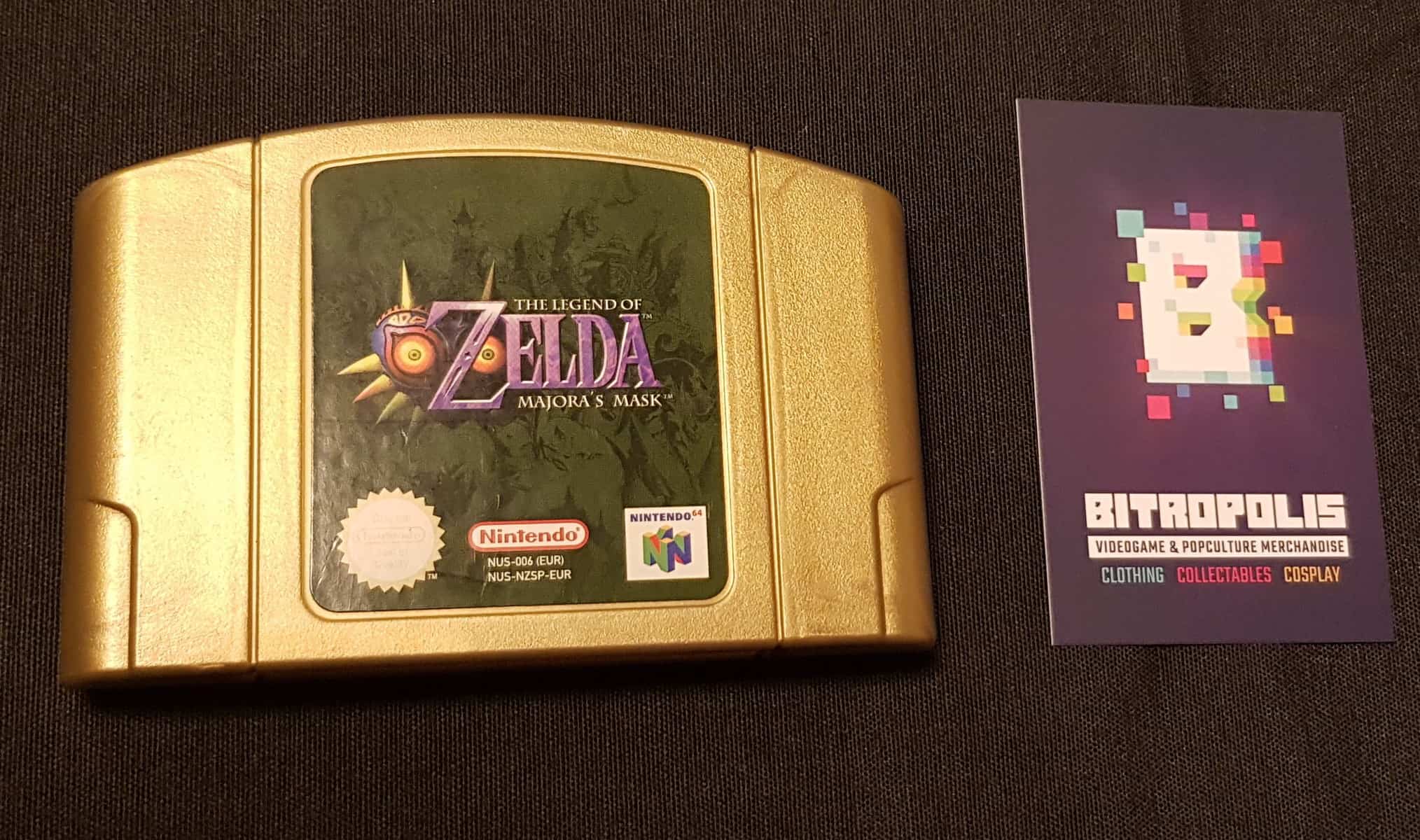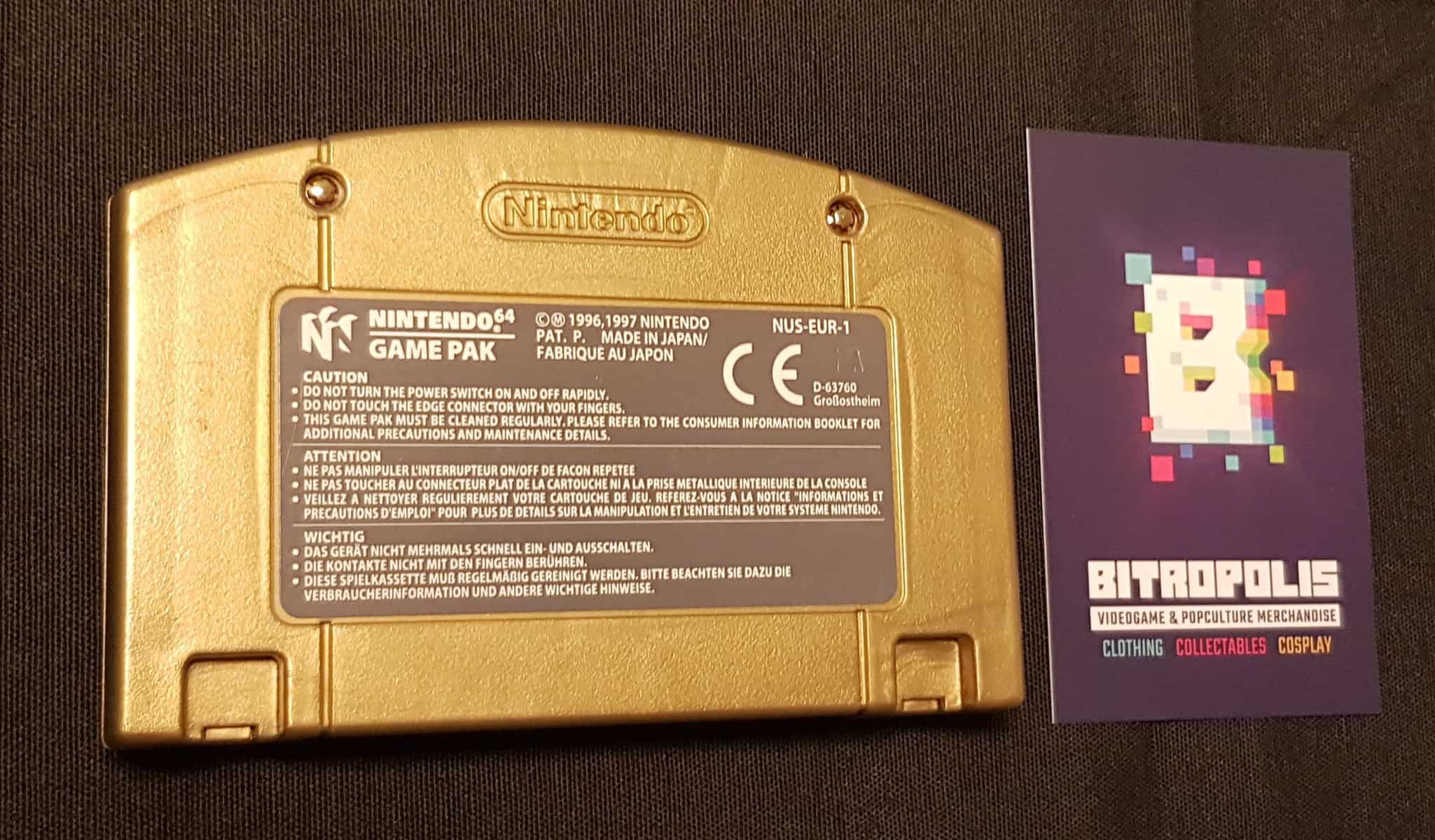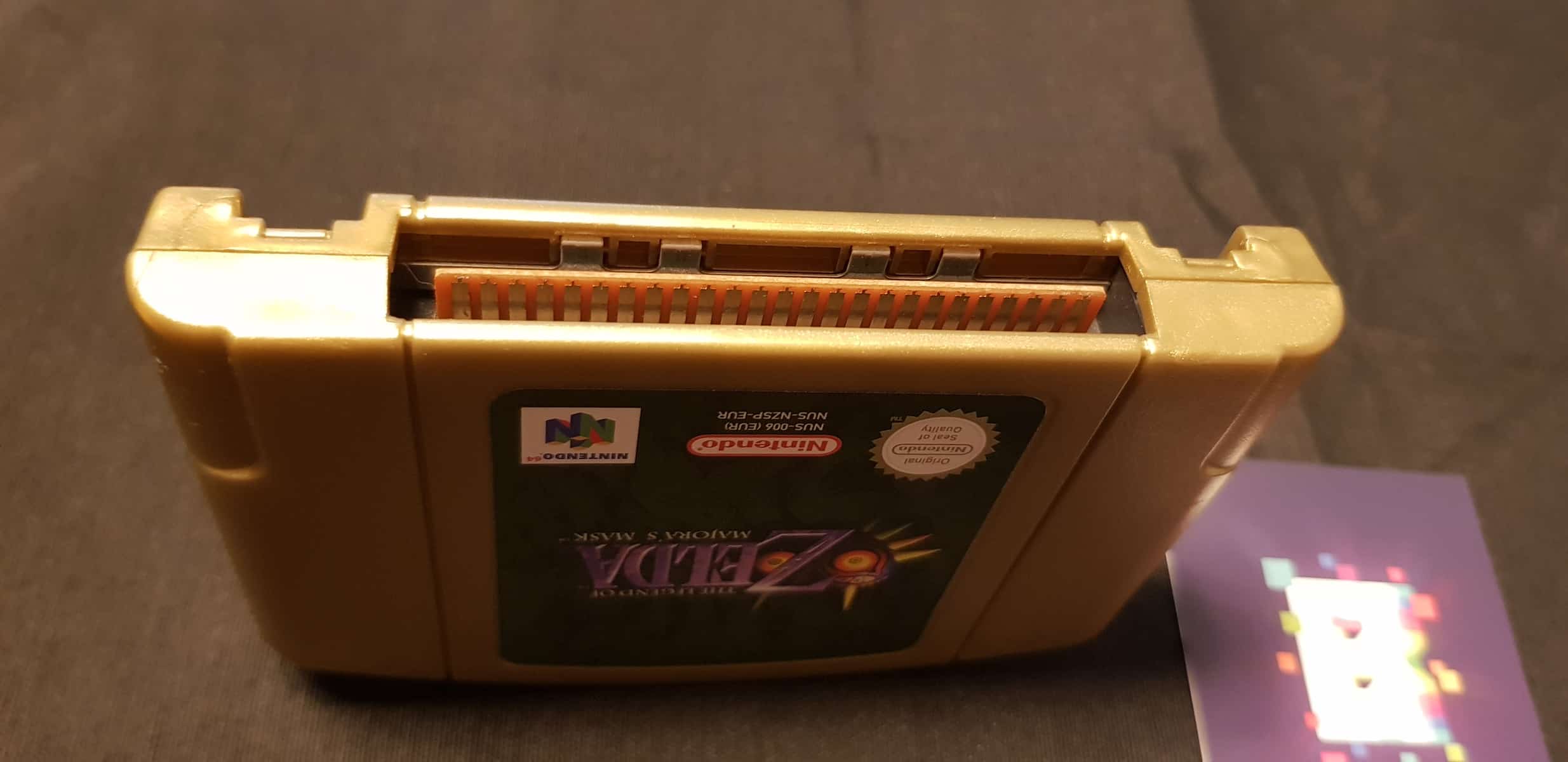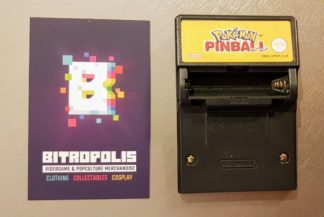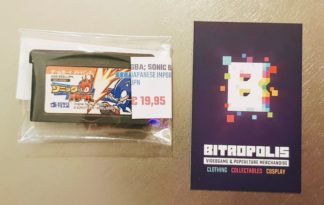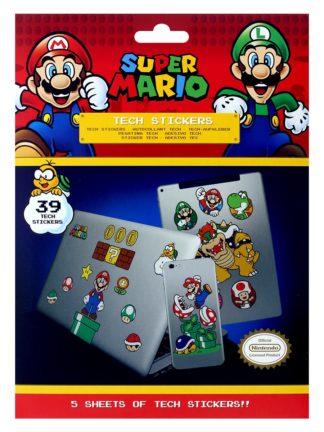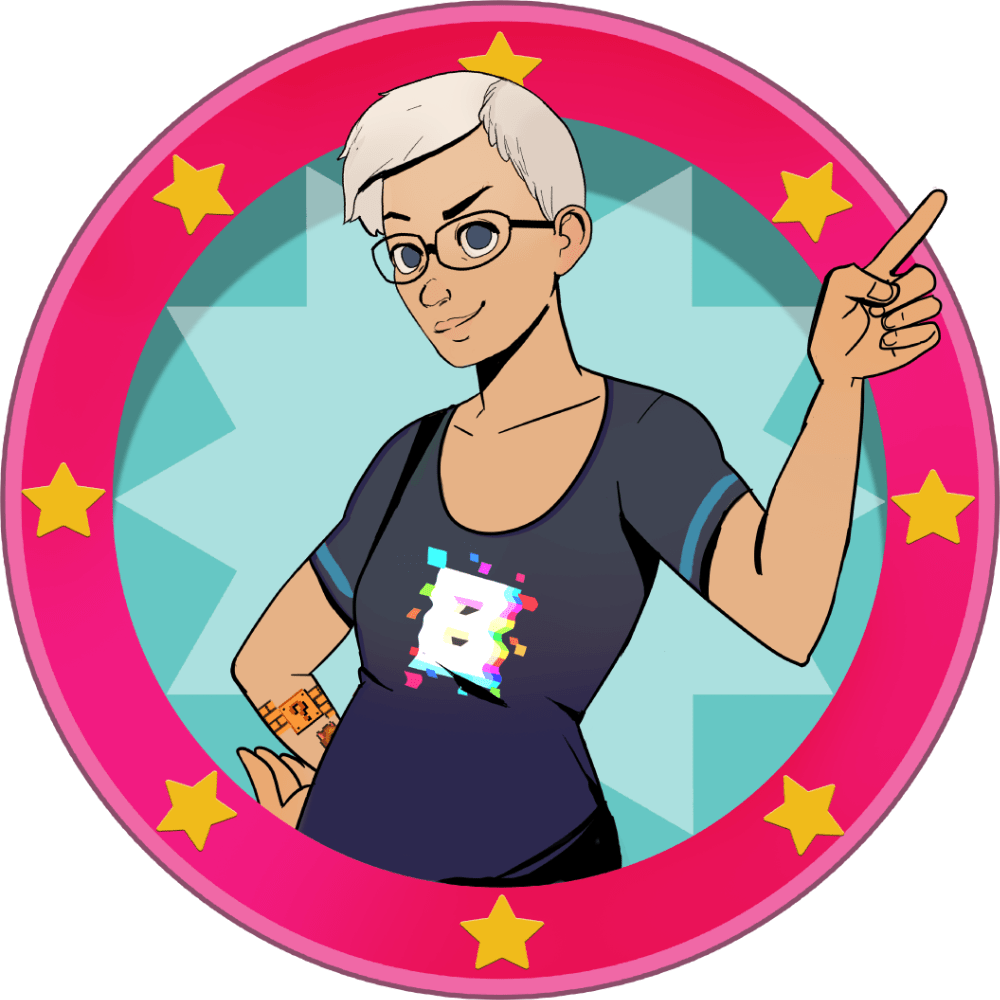N64: Legend of Zelda: Majora’s Mask / GOLD
€49,95
The Legend of Zelda: Majora’s Mask is an action-adventure game developed and published by Nintendo for the Nintendo 64. It was released in 2000 as the sixth main installment in The Legend of Zelda series and was the second to use 3D graphics, following 1998’s The Legend of Zelda: Ocarina of Time. Designed by a creative team led by Eiji Auonuma, Yoshiaki Koizumi, and Shigeru Miyamoto, Majora’s Mask was completed in less than two years. It featured enhanced graphics and several gameplay changes from its predecessor, though it reused a number of elements and character models, which the game’s creators called a creative decision made necessary by time constraints.
Majora’s Mask is set in Termina, an alternate reality to Ocarina of Time’s Hyrule, which is to be destroyed along with its inhabitants in three days by a giant falling moonunless the player can save it from imminent doom.[1] The plot’s antagonist is a mischievous imp called the Skull Kid who has stolen a powerful, ancient artifact called Majora’s Mask from an enigmatic traveling mask salesman. The game introduced several novel concepts, revolving around the perpetually repeating three-day cycle and the use of various masks that can transform Link into different beings. As the player progresses through the game, Link also learns to play numerous melodies on his ocarina, which allow him to control the flow of time or open passages to four temple dungeons. Characteristic of the Zelda series, completion of the game involves successfully traversing through several dungeons, each of which contain a number of complex puzzles and enemies. On the Nintendo 64, Majora’s Mask required the Expansion Pak, unlike Ocarina of Time, which provided additional memory for more refined graphics and greater flexibility in generating on-screen characters.
Majora’s Mask earned widespread acclaim from critics who praised the graphics and complex story. Despite a mixed initial reception, it is now considered to be one of the greatest video games ever made. It has also been recognized for its darker themes and more mature undertones, as compared to the overall Zelda franchise.
| Developer(s) | Nintendo EAD |
|---|---|
| Publisher(s) | Nintendo |
| Director(s) | |
| Producer(s) | Shigeru Miyamoto |
| Programmer(s) |
|
| Artist(s) |
|
| Writer(s) |
|
| Composer(s) | Koji Kondo |
| Series | The Legend of Zelda |
| Platform(s) | Nintendo 64, GameCube |
| Release | Nintendo 64 GameCube |
| Genre(s) | Action-adventure |
| Mode(s) | Single-player |
No box, no booklet
Uitverkocht
